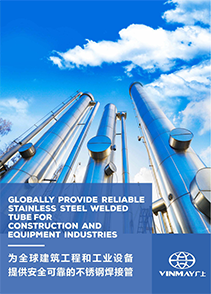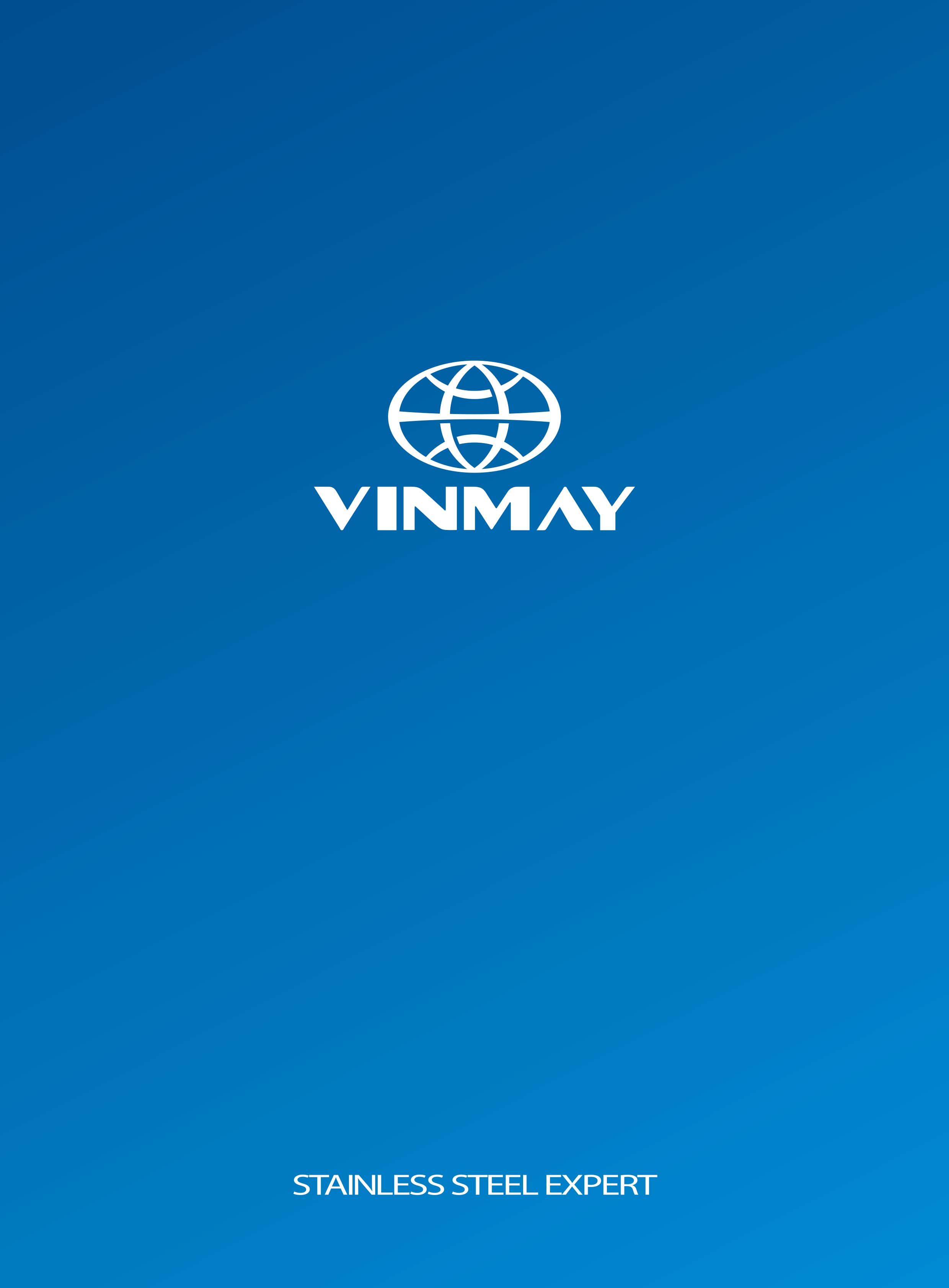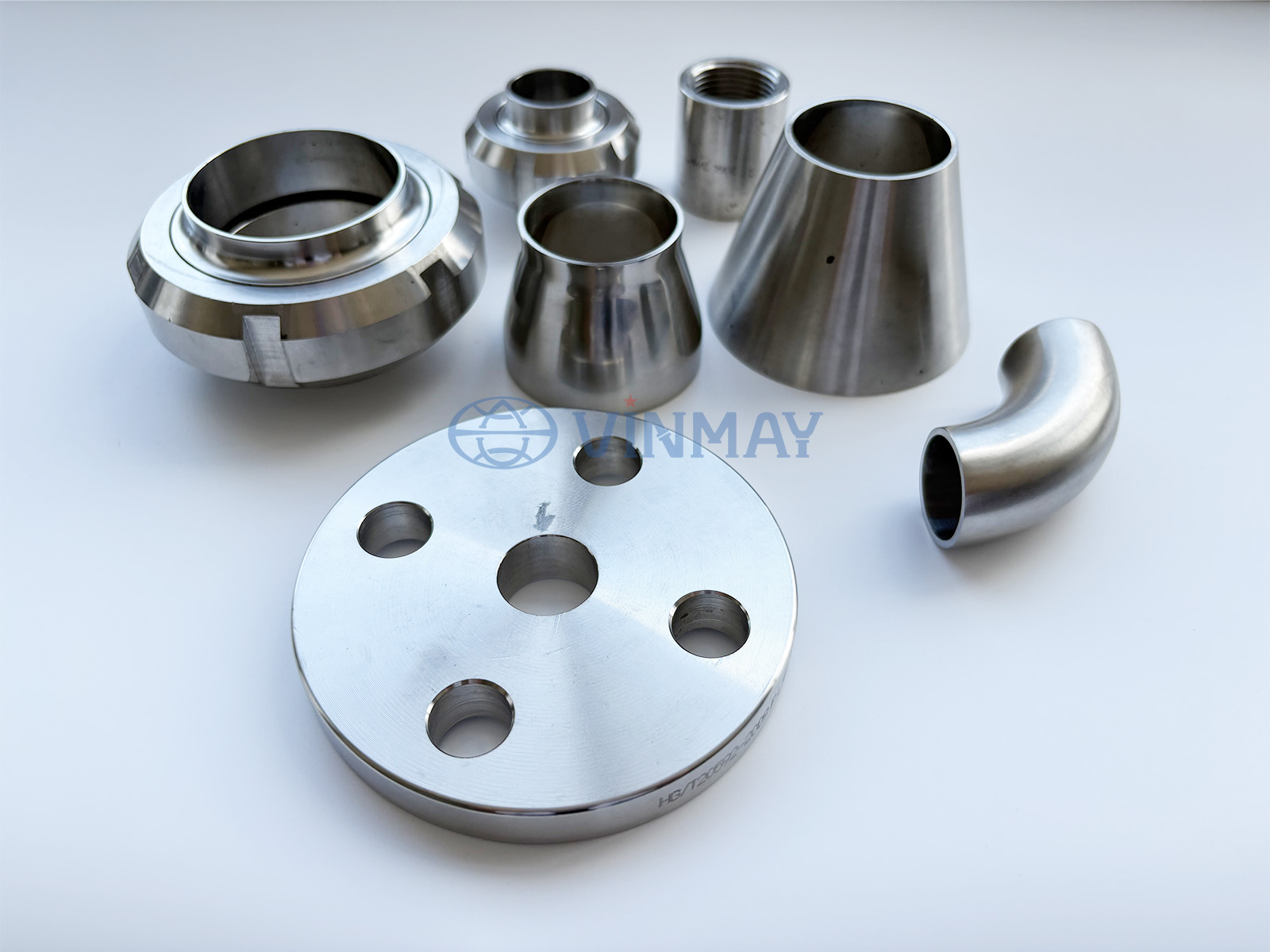
Sanitary tube fittings are special connectors designed to join stainless steel tubes used in systems where hygiene, safety, and cleanliness are crucial. Unlike standard industrial fittings, sanitary tube fittings feature smooth internal surfaces, rounded corners, and tight dimensional tolerances to prevent bacterial growth and make cleaning easier.
They are typically made of high-quality stainless steel, such as AISI 304 or 316L, known for superior corrosion resistance, strength, and suitability for food and pharmaceutical use.
In essence, sanitary tube fittings ensure that the liquid or semi-liquid materials flowing through the system remain pure and uncontaminated from start to finish.
Sanitary tube fittings come in various types, each designed for specific connection or flow control purposes. Below are the most commonly used classifications:
Adapters connect tubes or fittings of different sizes or standards. They are used to transition between connection systems like tri-clamp, threaded, or welded joints.
Clamps (often referred to as tri-clamps) hold ferrules and gaskets together, creating a tight, leak-proof seal. They allow quick disassembly and reassembly, ideal for systems requiring frequent cleaning.
Elbows change the direction of flow—typically by 45°, 90°, or 180°—while maintaining smooth internal surfaces to prevent fluid turbulence and residue buildup.
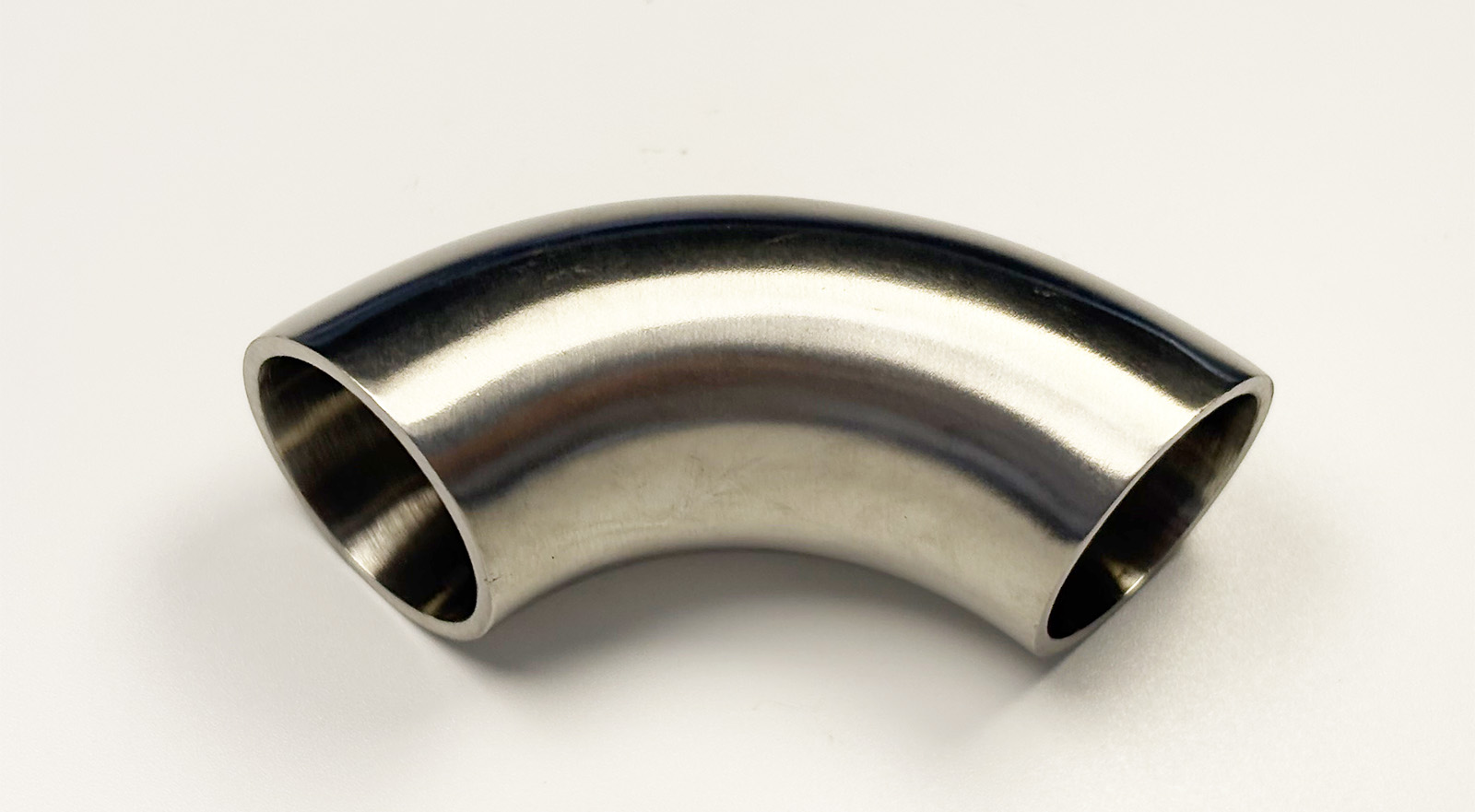
End caps are used to close off unused tube ends to prevent leakage and contamination when systems are not in operation.
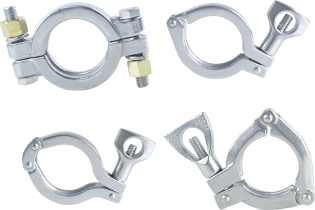
Ferrules are welded or clamped to tube ends, serving as the joining interface for gaskets and clamps.
Flanges are bolted connection components used when higher mechanical strength or permanent assembly is required.

Valves regulate flow direction, rate, or pressure within sanitary piping systems. Common types include ball valves, butterfly valves, and diaphragm valves.

Unions connect two tubes that may need to be frequently disconnected for maintenance or cleaning.
Tees are used to branch or combine flow in different directions and are available in equal or reducing types.
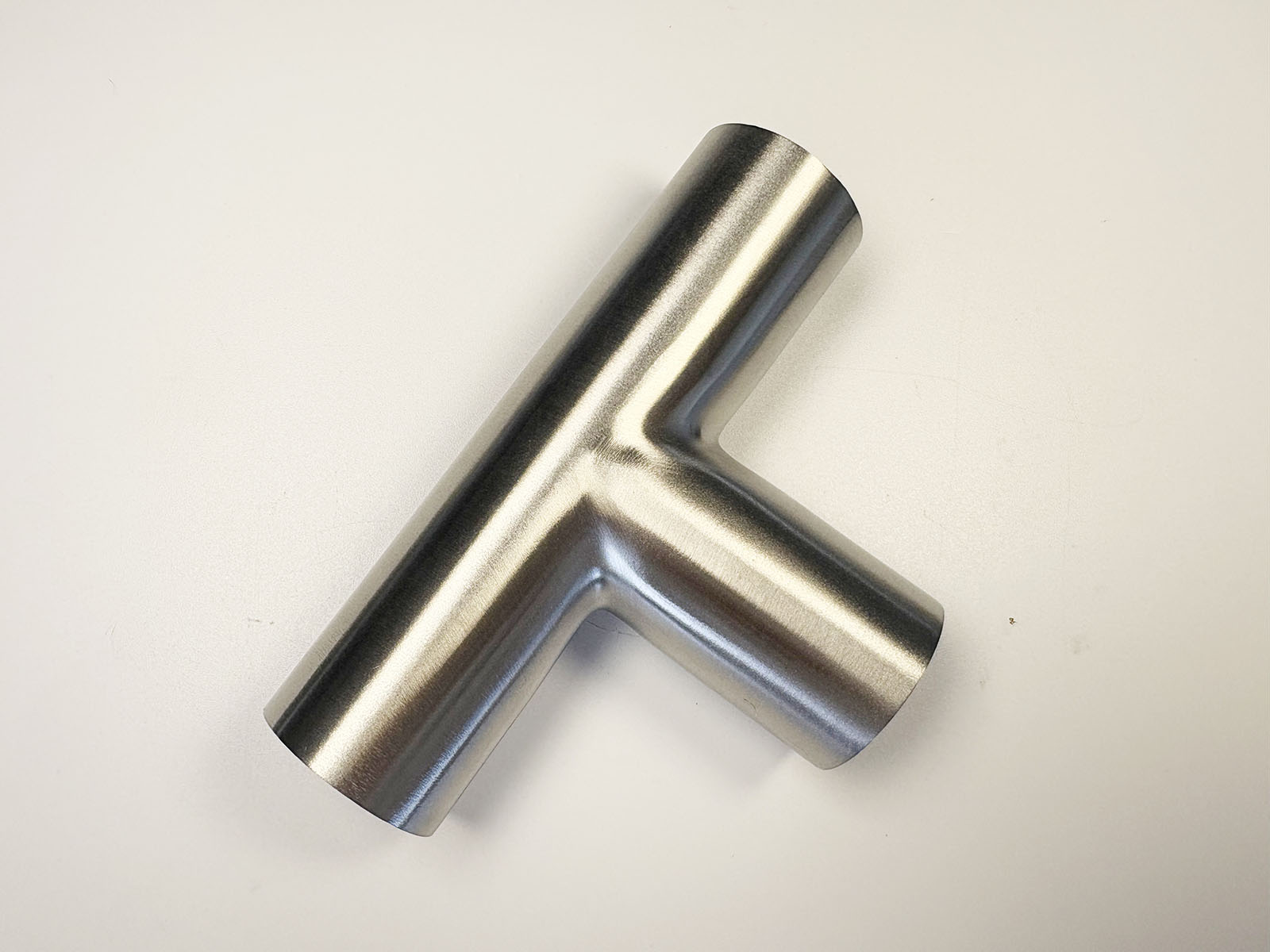
Reducers connect tubes of different diameters, ensuring smooth fluid transition without causing turbulence.
To guarantee hygiene, compatibility, and reliability, sanitary tube fittings are manufactured according to strict international standards. Each standard defines surface finish requirements, tolerances, and application scopes.
3A is the American standard for the food and dairy industries. It is designed to protect food from contamination by ensuring that all product contact surfaces are smooth, cleanable, and easy to disassemble for manual inspection.
3A fittings feature internal surface roughness of Ra 0.4 μm or better, achieved through electro-polishing or mechanical polishing.
Surface Finish: Mechanically polished, Sand blasting, Pickling, or Electro-polished.
They are widely used in food, beverage, dairy, chemical, and pharmaceutical production lines for superior hygiene and corrosion resistance.
The DIN (Deutsches Institut für Normung) standard originates from Germany and is widely applied across Europe.
DIN 11851 fittings are commonly used in food, chemical, and pharmaceutical industries, featuring screw-type connections for secure sealing.
DIN 11852 fittings, on the other hand, are designed for rolling-in and welding applications in hygienic processing systems.
The internal surface of DIN fittings must achieve Ra 0.4 μm, ensuring a clean, smooth, and corrosion-resistant surface.
Surface Finish: Mechanically polished, Sand blasting, Pickling, or Electro-polished.
The International Organization for Standardization (ISO) provides guidelines ensuring global compatibility of sanitary tube fittings.
ISO fittings are widely used worldwide—especially in China and Europe—for food, beverage, water treatment, and pharmaceutical applications.
They feature internal surface finishes with Ra ≤ 0.4 μm, guaranteeing excellent hygiene and easy cleaning.
Surface Finish: Mechanically polished, Sand blasting, Pickling, or Electro-polished.
BS 4825 is the British standard covering stainless steel tubes and fittings for food and beverage industries.
These sanitary tube fittings are suitable for both permanent installations and frequently cleaned systems.
BS 4825 fittings conform to RJT (Ring Joint Type) design, allowing easy manual assembly and disassembly.
Surface Finish: Mechanically polished, Sand blasting, Pickling, or Electro-polished.
They are extensively used across UK food, brewing, and dairy sectors.
SMS (Swedish Manufacturing Standard) fittings are widely used throughout Europe, especially in the food, beverage, and dairy industries.
They maintain internal surface roughness of Ra 0.4 μm or better, providing superior cleanliness and corrosion resistance.
Surface Finish: Mechanically polished, Sand blasting, Pickling, or Electro-polished.
These fittings are known for precision, durability, and reliable sealing, ensuring long-term hygienic performance.
Sanitary tube fittings are vital in industries requiring sterile and contamination-free processing. Key application sectors include:
Used for transporting milk, juices, beer, and other liquids while maintaining flavor integrity and hygiene.
Ensure sterile transfer of chemical and biological products during medicine manufacturing.
Used in labs and production facilities to transfer sensitive media such as enzymes or cell cultures.
Guarantee safe handling of milk and dairy products through hygienic, easy-to-clean systems.
Maintain product purity and consistency from fermentation to packaging.
Sanitary tube fittings use ferrules, clamps, and gaskets to connect pipelines securely, ensuring easy assembly and disassembly.
Food-grade gaskets ensure leak-proof and hygienic seals between ferrules, preventing contamination.
Valves and reducers manage liquid direction, pressure, and rate within the piping system.
Smooth internal surfaces support CIP (Clean-In-Place) and SIP (Sterilize-In-Place) procedures, ensuring the entire system remains sterile.
Premium stainless steels like 304, 316, and 316L are chosen for corrosion resistance and hygienic properties.
Advanced CNC equipment ensures tight dimensional tolerances and smooth internal transitions.
TIG and orbital welding are used for strong, clean, and seamless joints.
Every fitting undergoes mechanical polishing, sand blasting, pickling, or electro-polishing to achieve a Ra ≤ 0.4 μm finish.
Each sanitary tube fitting is tested for leakage, pressure, and dimensional accuracy to guarantee compliance with international standards.
At Vinmay, we take pride in delivering premium-quality sanitary tube fittings that meet 3A, DIN, ISO, SMS, and IDF standards.
Our fittings are widely used in the food, beverage, dairy, pharmaceutical, and chemical industries worldwide.
We offer a comprehensive product range including elbows, tees, reducers, unions, valves, clamps, and ferrules—all crafted with exceptional precision and surface finish.
With advanced manufacturing technology, strict inspection, and excellent customer service, Vinmay has become a trusted name in the global stainless steel sanitary industry.
Sanitary tube fittings are the foundation of hygienic piping systems across multiple industries. They ensure smooth flow, reliable sealing, and easy cleaning—crucial for maintaining safety and efficiency.
By choosing Vinmay sanitary tube fittings, you gain products that meet the highest international standards, ensuring your production line remains clean, durable, and efficient.
If you are looking for a dependable sanitary tube fittings manufacturer, contact Vinmay today to find the ideal solution for your hygienic processing system.
